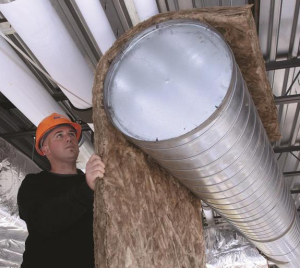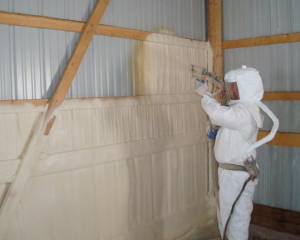There is more complexity to insulation than one may first believe. After all, we know what it is, what it does and that our buildings need it. What seems to be less understood is how much insulation buildings need, where insulation should be installed for utmost benefit (inside the building envelope, outside or both) and how it will perform in realworld conditions versus in a laboratory. Needless to say, none of these considerations matter if the chosen insulation type is not installed properly.
As building energy codes continue to elevate energy-efficiency requirements, the insulation industry strives to test products, assist building professionals in choosing and installing insulation materials, and prove their insulation will meet any building requirement. However, the onus still falls on the building owner/property manager to ensure the chosen insulation meets the specific needs of the building. “I think the concepts are more important than the products,” says Dr. James Hoff, president of Carmel, Ind.-based Tegnos Research Inc., a consulting firm that focuses on business and technical issues of the building envelope. “There are some larger issues that need to be considered and sometimes very complex reports can be overly simplified to the detriment of the building’s owner and occupants.”

Inside the Building Envelope
When one thinks of insulation, the first image that often comes to mind is fiber-glass batts rolled out in an attic or tucked between wall studs. In fact, fiber glass is installed in 90 percent of U.S. homes and maintains a healthy residential market share. It also is used in commercial buildings, as well as can be found insulating pipes and ductwork. The Alexandria, Va.-based North American Insulation Manufacturers Association represents fiber-glass, rock-wool and slag-wool manufacturers and touts these insulations’ decades of proven performance, safety, versatility and cost-effectiveness. In addition, many NAIMA member manufacturers have completed Environmental Product Declarations to help consumers and building professionals better understand the materials that make up the insulations and their impact on the environment during their life cycles.
Stacy Fitzgerald-Redd, NAIMA’s communications director, notes to remain competitive with newer—and what may seem to be “sexier—forms of insulation, NAIMA and its members take part in industry studies to emphasize their products’ performance benefits. Most recently, “The Thermal Metric Project”, which was conducted by Westford, Mass.-based Building Science Corp., a building science consulting and full-service architecture firm, demonstrated there are no superior insulation products as long as products are properly installed and walls are air sealed. (Learn more about the study.) “Put simply, R-value is R-value,” Fitzgerald-Redd says. “This is a significant finding that helps dispel lots of myths about product performance within the insulation industry. People considering retrofit work need to evaluate cost per R-value based on their need.”
Rick Duncan, technical director for the Fairfax, Va.-based Spray Polyurethane Foam Alliance, notes one of spray foam’s many benefits is its multipurpose capabilities. “Not only does it provide insulation value, it is a key component of the air-barrier system that seals the building envelope, which the U.S. Department of Energy says can provide anywhere from 20 to 40 percent energy savings in heating and cooling,” he says.
Photo: Spray Polyurethane Foam Alliance
In recent years, spray foam’s health impacts have come into question. “We were approached by a number of federal agencies, including EPA, OSHA and NIOSH, to address chemical-safety questions agencies had with application of spray-foam products,” Duncan explains. As a result, SPFA is working with the industry to develop test criteria for accurately measuring emissions. Duncan adds: “Emissions of installed spray foam have been measured and most products will pass long-term emissions standards for VOCs. However there may be certain airborne chemicals present during and just after the application of spray foam. Specific test methods are being developed to measure the levels of these sprayfoam chemical compounds.”
In addition, SPFA has published an industry-wide Environmental Product Declaration that is available from UL Environment, Northbrook, Ill. In fact, Duncan often receives questions about the use of petroleum in spray foam, which has been put into perspective with the EPD. “Our EPD shows that for every unit of energy used to make spray foam, you can save anywhere between 60 and 200 units over the life of the building by the insulation and air sealing spray foam provides,” he adds.


